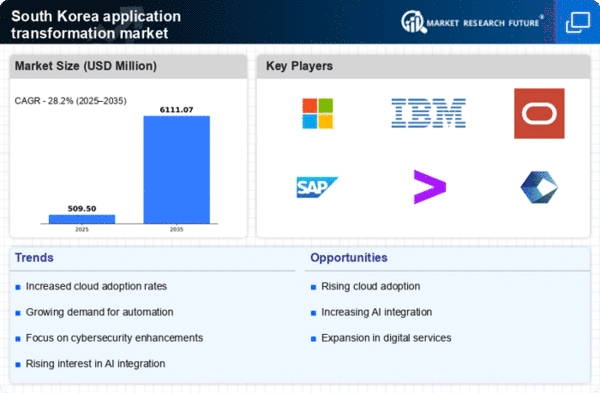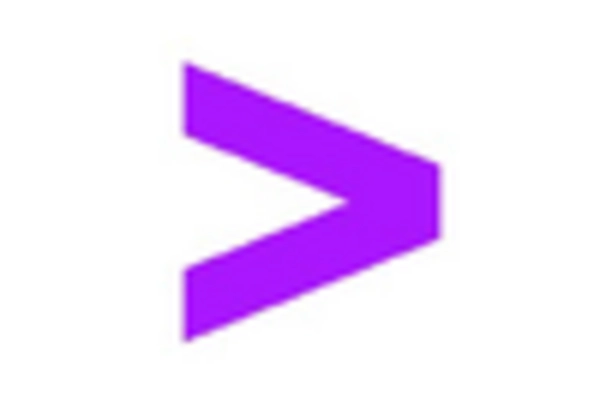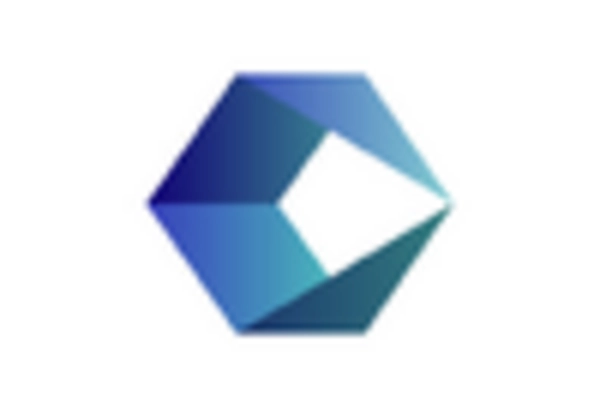Increased Focus on Data Analytics
In the context of the application transformation market, the emphasis on data analytics is becoming increasingly pronounced in South Korea. Organizations recognize the value of data-driven decision-making, prompting them to transform their applications to harness analytics capabilities. By 2025, it is estimated that 70% of businesses will prioritize integrating advanced analytics into their applications. This trend not only enhances operational efficiency but also enables companies to gain insights into customer behavior and market trends. The growing reliance on data analytics indicates a shift towards more intelligent applications, positioning the application transformation market as a vital area for investment and development.
Rising Demand for Digital Services
The application transformation market in South Korea experiences a notable surge in demand for digital services. As businesses increasingly prioritize digitalization, the need for modernized applications becomes paramount. This shift is driven by consumer expectations for seamless digital experiences, compelling organizations to adapt. In 2025, the market is projected to grow by approximately 15%, reflecting the urgency for businesses to enhance their digital capabilities. Companies are investing in application transformation to improve customer engagement and operational efficiency. This trend indicates a broader movement towards digital-first strategies, positioning the application transformation market as a critical component of business success in South Korea.
Growing Importance of User Experience
User experience (UX) is becoming a central focus in the application transformation market in South Korea. As competition intensifies, businesses recognize that superior UX can differentiate their offerings. In 2025, it is projected that 60% of organizations will prioritize UX in their application transformation strategies. This emphasis on user-centric design is likely to lead to increased investments in application modernization efforts. Companies are seeking to create intuitive and engaging applications that meet user expectations, thereby enhancing customer satisfaction and loyalty. The growing importance of UX underscores the need for businesses to invest in application transformation, positioning it as a key driver of market growth.
Emergence of Agile Development Practices
The application transformation market in South Korea is witnessing a shift towards agile development practices. Organizations are increasingly adopting agile methodologies to enhance their software development processes, allowing for quicker responses to market changes. This trend is likely to result in a 20% increase in the adoption of agile practices by 2025. Agile development fosters collaboration, flexibility, and continuous improvement, which are essential for successful application transformation. As businesses strive to remain competitive, the integration of agile practices into application development is expected to drive growth in the application transformation market, enabling faster delivery of innovative solutions.
Government Initiatives Supporting Innovation
The South Korean government actively promotes innovation through various initiatives, significantly impacting the application transformation market. Programs aimed at fostering technological advancement and digital transformation are being implemented, encouraging businesses to modernize their applications. For instance, the government allocated over $500 million in 2025 to support digital transformation projects across various sectors. This funding is likely to stimulate growth in the application transformation market, as organizations leverage these resources to enhance their technological infrastructure. The alignment of government policies with industry needs suggests a conducive environment for application transformation, driving further investment and development.

















Leave a Comment